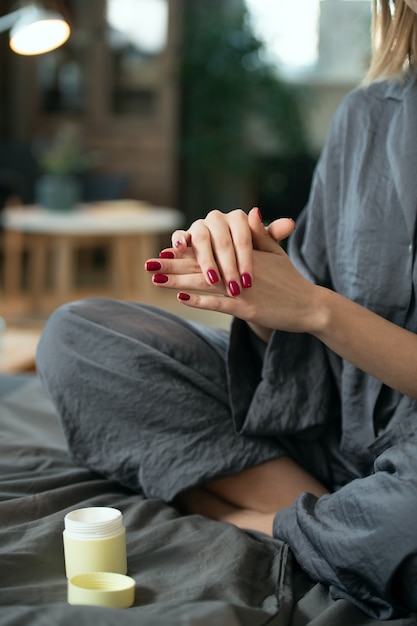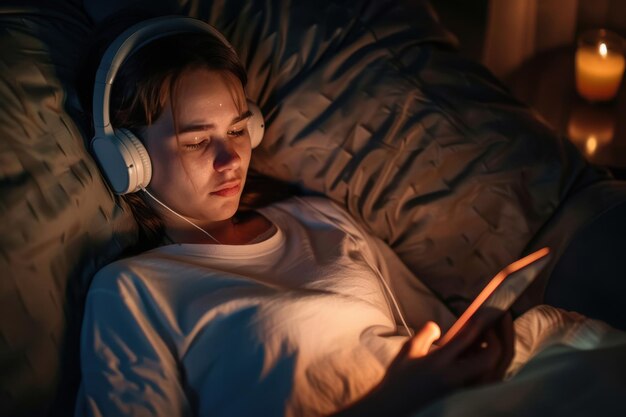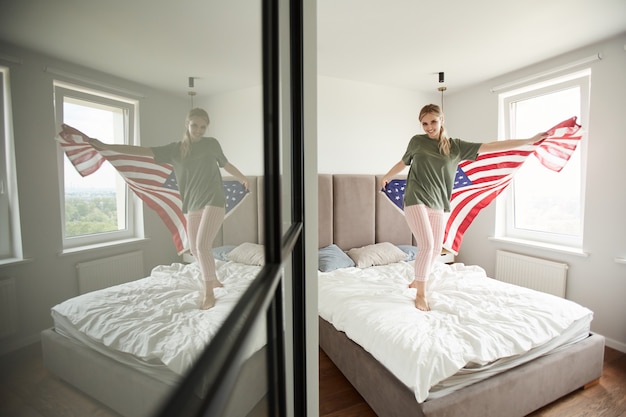ASMR Sleep Challenge: Can TikTok Tapping & Whispers Improve Sleep?

The ‘ASMR Sleep Challenge’ on TikTok explores whether Autonomous Sensory Meridian Response (ASMR) videos, featuring whispers and tapping, can effectively improve sleep quality, with users conducting 7-day experiments to test the impact on their sleep patterns and overall relaxation.
Is the ‘ASMR Sleep Challenge’ is Taking Over TikTok: Can Whispers and Tapping Really Improve Sleep Quality? A 7-Day Experiment just another fleeting trend, or does it hold the key to a more peaceful night’s rest?
Understanding the ASMR Phenomenon
ASMR, or Autonomous Sensory Meridian Response, is a tingling sensation that typically begins on the scalp and extends down the neck and upper spine. This sensation is often triggered by specific audio and visual stimuli, such as whispering, tapping, scratching, and slow hand movements. This phenomenon has gained widespread popularity, with millions seeking out ASMR content for relaxation and sleep aid.
The Science Behind ASMR
While the scientific research on ASMR is still in its early stages, some studies suggest that it may be associated with increased activity in brain regions related to pleasure, relaxation, and emotional regulation. Additionally, ASMR may promote the release of endorphins and oxytocin, neurochemicals that contribute to feelings of well-being and calmness.
Common ASMR Triggers
ASMR triggers vary from person to person, but some of the most common include:
- Gentle whispering
- Soft tapping sounds
- Slow, deliberate movements
- Personal attention and role-playing
It’s important to note that not everyone experiences ASMR, and the effectiveness of specific triggers can differ significantly among individuals.
In conclusion, ASMR is a complex phenomenon with potential benefits for relaxation and sleep. However, further research is needed to fully understand its mechanisms and effectiveness.

The Rise of the ASMR Sleep Challenge on TikTok
TikTok has become a hub for viral trends, and the ASMR Sleep Challenge is no exception. Users are documenting their experiences with ASMR as a sleep aid, often conducting 7-day experiments to assess its impact on their sleep quality. These challenges typically involve incorporating ASMR videos into their bedtime routine and tracking metrics such as sleep duration, sleep latency (the time it takes to fall asleep), and overall sleep satisfaction.
How the Challenge Works
The typical ASMR Sleep Challenge involves the following steps:
- Selecting ASMR Content: Participants choose ASMR videos or audio tracks that feature triggers they find relaxing.
- Incorporating ASMR into Bedtime Routine: ASMR content is typically consumed in the hour before bed.
- Tracking Sleep Metrics: Participants use sleep tracking apps, wearable devices, or sleep journals to monitor their sleep patterns.
- Documenting Experiences: Participants share their experiences on TikTok, often providing daily updates on their sleep quality and overall well-being.
Popular ASMR Creators on TikTok
Several ASMR creators have gained significant popularity on TikTok, contributing to the widespread interest in the ASMR Sleep Challenge. Some notable creators include:
- @GentleWhispering: Known for her soft-spoken voice and gentle hand movements.
- @ASMRDarling: Offers a variety of ASMR triggers, including tapping, scratching, and role-playing.
- @CalmingWhispers: Specializes in whispered stories and guided meditations.
These creators have amassed millions of followers, demonstrating the growing demand for ASMR content on TikTok.
In conclusion, the ASMR Sleep Challenge on TikTok has brought attention to the potential benefits of ASMR for sleep, with users actively experimenting with different triggers and sharing their experiences with a wide audience.
A 7-Day ASMR Sleep Experiment: Methodology
To evaluate the efficacy of the ASMR Sleep Challenge, a 7-day experiment can be conducted. This experiment should involve a consistent approach to ASMR consumption and sleep tracking to provide meaningful insights. Factors like selecting the correct ASMR content, consistency, and tracking are essential.
Participant Selection
Ideally, participants should exhibit sleeping problems such as:
- Insomnia
- Restless sleep
- Difficulty falling asleep
Participants should also be open to ASMR and willing to follow the experimental protocol consistently.
Choice of ASMR content
Consider the following points when choosing ASMR content:
- Personal Preference: Choose ASMR triggers that you find inherently relaxing and enjoyable. For some it’s tapping and scratching, for others it’s whispers.
- Consistency: Stick to the same content creators and types of triggers throughout the week to ensure consistent exposure.
- Quality Considerations: High-quality recordings are usually the best. It can’t be heavily edited or distorted, or it will ruin the ASMR effect.
Sleep Tracking Methods
There are many ways to track sleeping metrics, such as:
- Sleep tracking apps for smartphones
- Wearable devices. These have become accurate in recent years.
- Sleep Journals. These allow for self reporting. It is important to be as accurate as possible and report how you really feel.
In conclusion, the 7-day ASMR sleep experiment should be well planned with clear methodology to ensure accurate results.

Analyzing the Results: Did ASMR Improve Sleep Quality?
After completing the 7-day experiment, it’s essential to analyze the collected data to determine whether ASMR had a measurable impact on sleep quality. Comparing sleep metrics before and during the ASMR intervention can provide valuable insights.
Key Metrics to Consider
The following metrics should be closely examined:
- Sleep Duration: Did ASMR increase the total amount of time spent asleep each night?
- Sleep Latency: Did ASMR shorten the time it took to fall asleep?
- Sleep Efficiency: Did ASMR improve the percentage of time spent asleep while in bed?
- Subjective Sleep Quality: Did participants report feeling more rested and refreshed after using ASMR?
Statistical Significance
To determine whether the observed changes are statistically significant, consider the following:
- Baseline Data: Compare sleep metrics from the ASMR intervention period to a baseline period without ASMR.
- Sample Size: The larger the sample size, the more reliable the results will be.
- Statistical Tests: Use appropriate statistical tests, such as t-tests or ANOVA, to assess whether the differences between the two groups are statistically significant.
Limitations
It’s important to acknowledge the limitations of the experiment:
- Placebo Effect: The improvements may be due to the placebo effect.
- Subjective Bias: Self-reported sleep quality may be influenced by subjective biases.
- Confounding Variables: Other factors such as screen time, diet, and caffeine intake can affect sleep quality.
In conclusion, analyzing the results of the ASMR Sleep Challenge requires a careful examination of key sleep metrics, consideration of statistical significance, and acknowledgment of potential limitations.
Potential Benefits and Drawbacks of Using ASMR for Sleep
While the ASMR Sleep Challenge has gained popularity, it’s important to weigh the potential benefits and drawbacks before incorporating ASMR into your sleep routine. Understanding both sides can help you make an informed decision.
Potential Benefits
Some potential benefits of using ASMR for sleep include:
- Reduced Anxiety: ASMR can promote feelings of relaxation and reduce anxiety, which can make it easier to fall asleep.
- Improved Mood: ASMR may enhance mood and create a sense of well-being.
- Enhanced Sleep Quality: By promoting relaxation and reducing anxiety, ASMR may improve overall sleep quality.
Potential Drawbacks
Some potential drawbacks to consider:
- Addiction: Some individuals may become overly reliant on ASMR, making it difficult to fall asleep without it.
- Lack of Scientific Evidence: The scientific evidence on the effectiveness of ASMR for sleep is still limited.
Alternative Sleep Aids
Consider the following alternatives:
- Practicing Good Sleep Hygiene: Establishing a regular sleep-wake schedule, creating a relaxing bedtime routine, and optimizing your sleep environment
- Trying Other Relaxation Techniques: Meditation, deep breathing exercises, and progressive muscle relaxation.
- Seeking Professional Help: If you’re experiencing chronic sleep problems, consult a healthcare professional or sleep specialist.
In conclusion, ASMR may offer several potential benefits for sleep, but it also comes with potential drawbacks. Weigh the pros and cons carefully before incorporating ASMR into your sleep routine.
Ethical Considerations and Responsible Consumption of ASMR Content
As the ASMR community grows, it’s important to address ethical considerations and promote responsible consumption of ASMR content. This involves respecting creators, consumers, and boundaries within the community.
Respect for Creators
Some ways of respecting creators include:
- Support Creators: Subscribe to their channels, like their videos, and leave positive comments.
- Give Credit: Always credit the creator when sharing or referencing their work.
- Avoid Plagiarism: Never copy or redistribute ASMR content without permission.
Respect for Consumers
Respect for consumers involves the following:
- No Judgment: Accept that preferences differ from person to person.
- Privacy: Respect people’s right to enjoy ASMR in private.
Setting Boundaries
Consider the following:
- Avoid Inappropriate Content: Refrain from creating or consuming ASMR content that is sexually suggestive, exploitative, or harmful.
- Be Respectful of Boundaries: Do not engage with ASMR creators or consumers in a way that is intrusive, harassing, or disrespectful.
In conclusion, ethical considerations and responsible consumption are essential for fostering a healthy and supportive ASMR community.
| Key Point | Brief Description |
|---|---|
| 😴 Understanding ASMR | ASMR is a sensory experience triggered by sounds and visuals, promoting relaxation. |
| 📱 TikTok Trend | ASMR Sleep Challenge on TikTok tests ASMR’s impact on sleep through 7-day experiments. |
| 🔬 7-Day Experiment | Involves consistent ASMR use and sleep tracking for data-driven analysis. |
| ✅ Analyzing Results | Metrics such as sleep duration and latency are assessed to measure ASMR’s effectiveness. |
Frequently Asked Questions
▼
ASMR stands for Autonomous Sensory Meridian Response, a tingling sensation that starts on the scalp and spreads down the neck and spine, often triggered by specific auditory or visual stimuli.
▼
Experiment with different ASMR triggers like whispering, tapping, or slow movements to see which ones help you relax. Choose content that you find enjoyable and soothing.
▼
Some individuals may become reliant on ASMR, finding it difficult to fall asleep without it. It’s essential to use it in moderation and be aware of potential dependency.
▼
ASMR doesn’t affect everyone the same way; some people may not experience it at all. Results vary based on individual preferences and physiological responses.
▼
Alternatives include practicing good sleep hygiene, meditation, reducing screen time before bed, and maintaining a consistent sleep schedule to enhance overall restfulness.
Conclusion
The ‘ASMR Sleep Challenge’ is Taking Over TikTok: Can Whispers and Tapping Really Improve Sleep Quality? A 7-Day Experiment has opened up new questions about sleep aids and sleep quality. ASMR is a valuable tool that can be used to improve sleep – but it is not for everyone. However, those struggling to sleep should consider trying it.